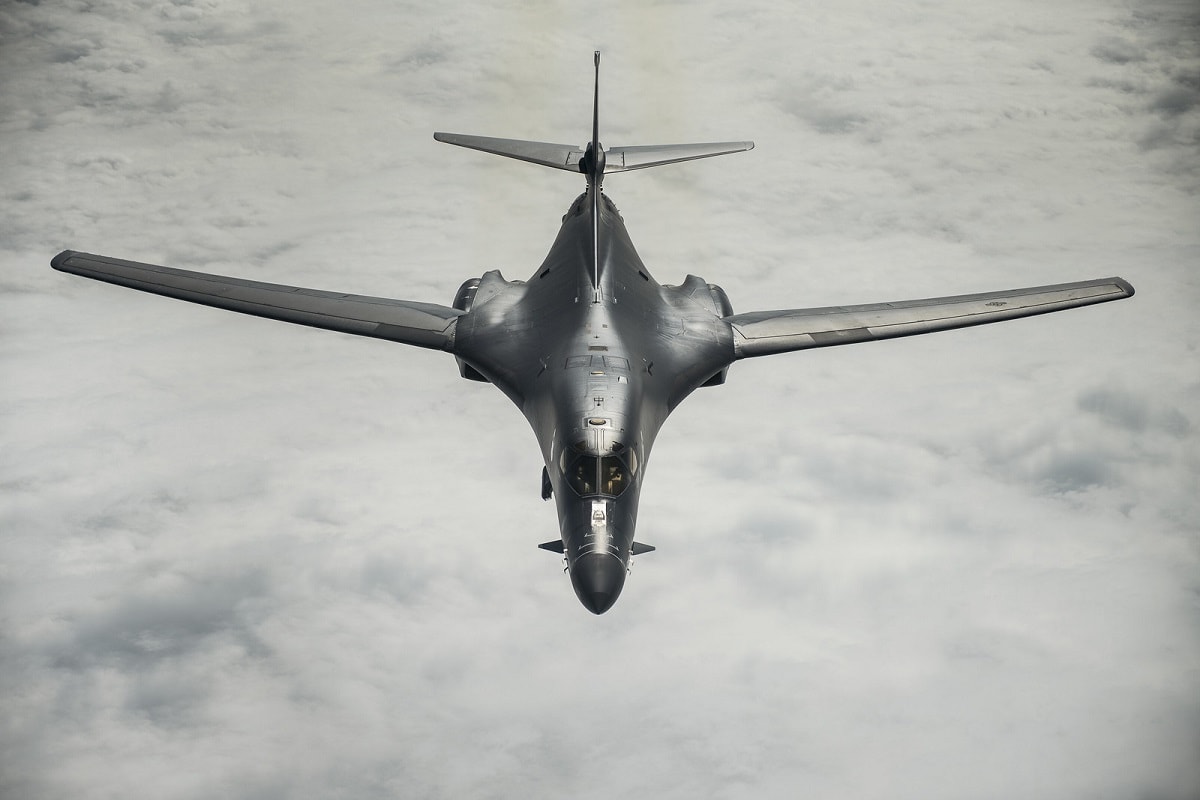The B-1B Lancer’s days are numbered – but the United States Air Force announced that no more of the Cold War-era bombers will be retired until the new B-21 Raider enters service.
While a total of 100 B-1B bombers were built, the Air Force fleet currently numbers sixty-two, and efforts have been underway to ensure that forty-five of the aircraft will remain in service until the 2030s.
The B-1 as a Bomber Bridge to the Future
The Air Force has received the first two B-21 Raider bombers for testing, but it is still too soon to even consider retiring the Lancer anytime soon, a senior Air Force official told a House Armed Services panel on Tuesday.
While seventeen B-1s could be retired – and accordingly preserved as “backups” – the forty-five remaining bombers will be kept in service “until these units shake hands with the B-21s as they arrive,” Lt. Gen. David S. Nahom told the House Armed Services subcommittee on project forces according to Air Force magazine.
“We have no intention of going below 45, because the combatant commanders need that firepower in the next five, seven, 10 years, until the B-21s start showing up in the numbers we need them,” added Nahom.
Lt. Gen. S. Clinton Hinote, deputy chief of staff for strategy, integration, and requirements, also warned that the B-21 can’t arrive soon enough. However, he explained that the schedule for the B-21 was made as long as fifteen years ago under the Budget Control Act, which put a priority on readiness over modernization. As a result, the U.S. Air Force will have to rely on the 1980s era B-1Bs for at least another decade and perhaps even longer.
Air Force acting acquisition executive Darlene Costello has also said that it is now very much a priority to get the B-21 “through the design, get completed, and not introduce concurrency (in the program).” In other words, the B-21 Raider needs to enter service and not be rushed to coexist with the B-1B Lancer.
The Air Force’s decision to reduce the combat capability of the B-1 fleet has been called into question, but Nahom has said it will be at least as good, perhaps even better than the service maintaining additional aircraft. The seventeen most expensive and most difficult to maintain aircraft will thus be taken out of service. That could actually keep the B-1 readiness higher.
Earlier this year the Air Force was forced to ground its entire B-1B bomber fleet due to issues with the fuel system.
“During the inspection process following a B-1B ground emergency on April 8 at Ellsworth Air Force Base, South Dakota, a discrepancy with an augmenter fuel pump filter housing was discovered,” the Air Force Global Strike Command said in a statement. “As a precautionary measure, the commander directed one-time inspections on all B-1B aircraft to resolve this issue.”
The issue has been addressed, and the Air Force has continued to upgrade and update its B-1 fleet to ensure the Lancer will remain airborne until the Raiders enter service and take to the skies.
Peter Suciu is a Michigan-based writer who has contributed to more than four dozen magazines, newspapers and websites. He regularly writes about military small arms, and is the author of several books on military headgear including A Gallery of Military Headdress, which is available on Amazon.com.

